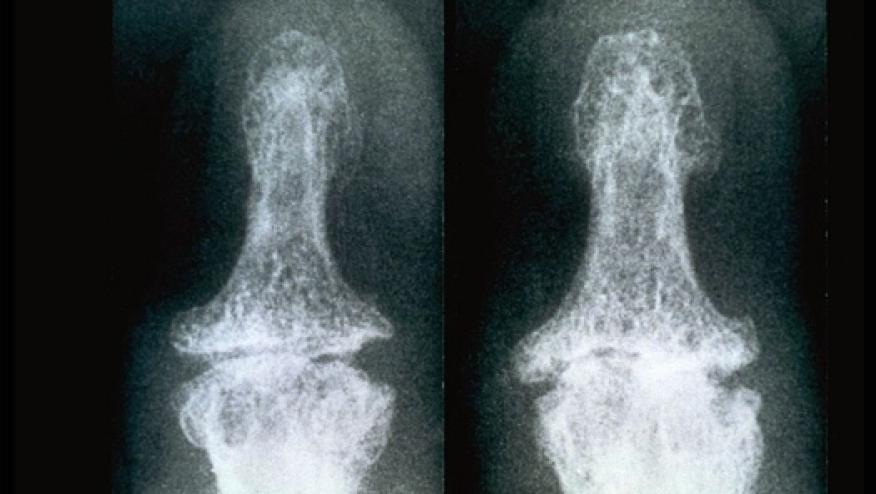Why Would Hand OA Be Less Severe in Black People? Save

Osteoarthritis (OA) of the hand was less severe according to objective and pain-related markers in Black patients versus those of other racial/ethnic groups after adjustment for known risk factors, researchers found.
The finding was a major surprise and somewhat mysterious, insofar as previous studies have shown that OA of the hip and knee tended to be worse in Black people than in others. Indeed, it's unclear why race in and of itself would have any bearing on OA development.
Investigators in the new study, led by Farhad Pishgar, MD, MPH, of Johns Hopkins University in Baltimore and reported in Arthritis & Rheumatology, had no conclusive explanation for the reduced hand OA severity in Black patients. They did establish that there were no interracial differences in known OA risk factors that could account for the disparity.
"Future mechanistic studies are warranted to determine the mediating protective factors for hand OA among Black subjects," Pishgar and colleagues concluded.
The researchers observed that hand OA in general has been less well studied than OA afflicting the lower body, where the functional deficits are arguably more significant for daily activities. The current study was an attempt to fill this gap by examining differences in hand OA disease markers among the major racial/ethnic groups in the U.S. "Investigating the association between race and hand OA can lead to a better understanding of the pathogenesis of the disease and proper tailoring of preventive or therapeutic strategies according to race," the investigators explained.
Data for the study came from the Osteoarthritis Initiative, an ongoing registry study that aims to improve understanding of OA's natural history. At the time of the current study's writing, the dataset covered some 4,800 individuals, all but about 100 of whom were included in the analysis. Of these, 849 were Black; the comparator group for statistical analysis comprised all the other participants, i.e., non-Black.
Adjustments were taken for recognized hand OA risk factors, which included the following:
- Age
- Sex
- Body mass index
- Use of osteoporosis medications (surrogate for bone density)
- Work or hobbies with extensive hand use
- Evidence of ischemic heart disease
- Smoking
- Radiographic knee OA severity
Markers of hand OA severity included a modified five-grade Kellgren/Lawrence score (for overall severity), radiographic evidence of joint erosion, chondrocalcinosis of the triangular fibrocartilage complex (TFCC), presence of symptomatic hand OA, and presence of clinical hand OA (presence of Heberden's nodes plus radiographic chondrocalcinosis of the TFCC).
Relative to non-Black participants, those classified as Black showed Kellgren/Lawrence scores that were almost two points lower on average after propensity matching (β = -1.93, 95% CI -2.53 to -1.34).
Other outcomes, too, showed decreased likelihood of more severe hand OA for Black patients:
- Radiographic hand OA: OR 0.79 (95% CI 0.66-0.94)
- Erosive OA: OR 0.23 (95% CI 0.11-0.47)
- Symptomatic OA: OR 0.63 (95% CI 0.49-0.82)
- Clinical OA: OR 0.49 (95% CI 0.41-0.60)
This is not the first time that a study has demonstrated racial differences in hand OA severity -- Pishgar and colleagues cited earlier work finding lower risk for women of Chinese ancestry, as well as reduced lifetime risk among Black versus white individuals. However, those studies lacked key details about participant characteristics, leaving it uncertain whether differences in underlying risk factors were responsible.
At the same time, however, a previous analysis of National Health and Nutrition Examination Survey data from the early 1990s did not show any difference between Black and non-Black individuals in symptomatic hand OA, which "suggests that environmental factors are most likely more important for the development of hand OA than racial differences," Pishgar's group wrote.









If you are a health practitioner, you may Login/Register to comment.
Due to the nature of these comment forums, only health practitioners are allowed to comment at this time.